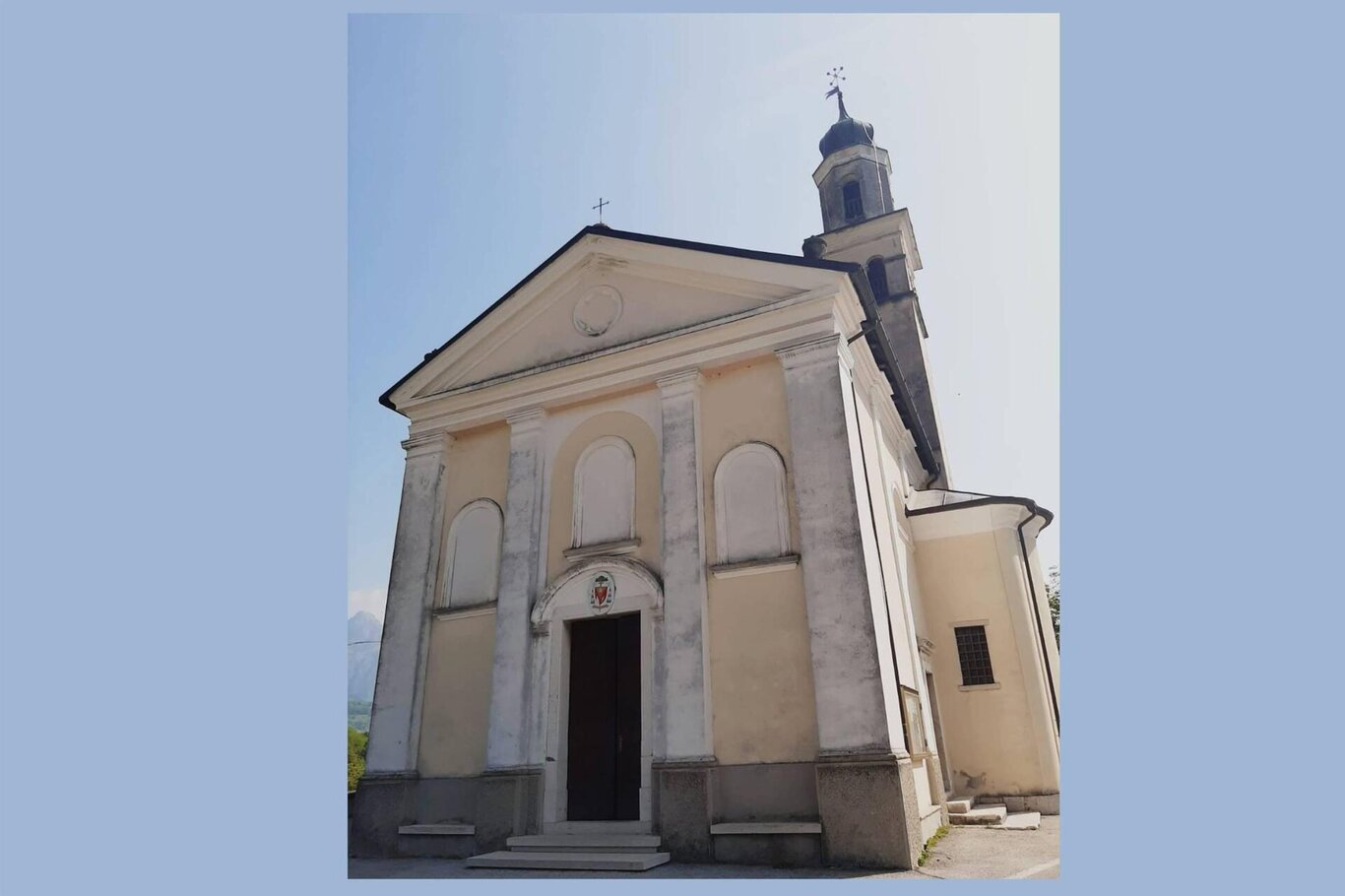Feast of Our Lady of Caravaggio: May 26
Feast of the Holy Savior: August 6
In Travagola, the church was built around 1516 and was rebuilt in the last century. It preserves a canvas by Giovanni d’Antona. With the chapel dedicated to the cult of Our Lady of Caravaggio, Travagola is one of the most important Marian centers in the Feltrine and Belluno area. Here is kept a painting by Francesco Frigimelica on the theme of the Transfiguration. The parish dedicated to the Holy Savior was founded in 1950.
Traveling from Pedavena towards the Canalet, as you reach the rise leading to the square of Travagola, the church of Travagola stands out beautifully, illuminated by the sun, which seems to have been built in 1516, that is, 500 years ago. It is very evocative to reach it by walking along a short arched tree-lined avenue that showcases its total beauty in every season. A low wall embraces the church dedicated to the Holy Savior, the rectory, and the small monument to the fallen.
The façade, a work by Marchioro, is simple in its lines and features four pilasters supporting the triangular pediment; between the two central pilasters, connected by a lowered arch, lies the main entrance topped by the episcopal coat of arms; further up, three false windows with full-arch closures are present, while a false rose window is located within the triangle of the pediment. There are two chapels and side doors, and set back is the bell tower.
The interior, not large, consists of a single nave, closed at the top by a lowered vaulted ceiling from which hangs a majestic chandelier; the baptismal font from 1641 is also significant. An archway separates the space designated for the faithful from the apse, preserving traces of fresco decorations where part of the body of St. Sebastian, pierced by an arrow, can still be read, a painting older than the decorations above. The original stone slab floor connects the nave to the raised apse.
In the apse is the main altar with two precious ancient painted wooden statues depicting St. Peter and St. Paul, recently restored. Corinthian columns connected by an arch precede the view of the altarpiece featuring the Transfiguration: Jesus 40 days before the Crucifixion among Elijah and Moses, that is, the Law and the Prophets, and below the Apostles Peter, James, and John. The figures are symmetrically arranged in relation to the figure of Christ and highlight a formal rigor combined with communicative clarity; the faces of the characters are treated realistically to appear as strongly characterized portraits. It is an important work attributed to Frigimelica, a painter who was active in Feltre in 1596 and a protagonist of the renewal of art in the Belluno area.
The chapel of St. Anthony of Padua, to the left, has a particular history. In the summer of 1783, an epidemic of cattle began in Pren and Villapaiera, and it was hypothesized that it had been imported with some cattle from abroad. It then struck Pedavena and Sega. It was more severe in Facen, so that from December 20 to March 1, 1784, the small village and its surroundings were strictly isolated. More than 70 animals died, which represented the livelihood, and during that particularly snowy winter, one can imagine the condition of the poor people isolated. The Health Magistrate sent 10 Schiavoni soldiers, maintained by the local people, to ensure strict discipline over the prohibition of movement, to the point that even the parish priest could only go to Facen for extreme cases.
Travagola and its surroundings were not affected. In gratitude for the escaped danger, the parishioners decided to build a new altar, which is to the left of the nave, dedicated to St. Anthony of Padua, and commissioned Giovanni D’Antona to create an oil painting as an ex-voto, that is, as a result of a vow.
The completed altar was blessed in 1789.
The other chapel dedicated to Our Lady of Caravaggio dates back to 1894.
Early ancient apparitions of the Virgin in Caravaggio (Bergamo) and in Pinè (Pergine Valsugana-Trento), places of pilgrimage, convinced the decision to open also in Travagola a Marian Sanctuary that over time has become a destination for devotion.
